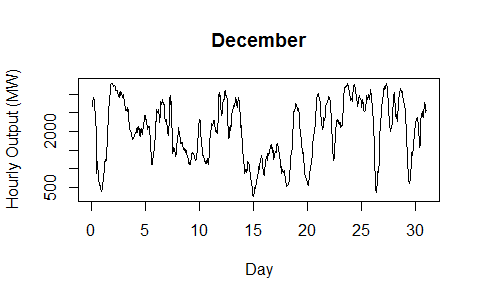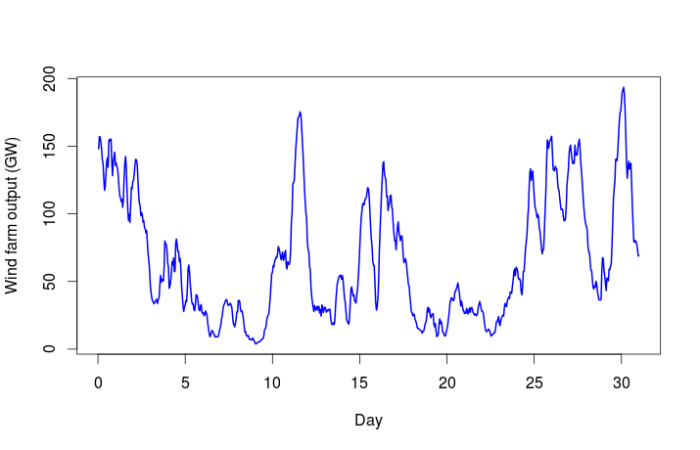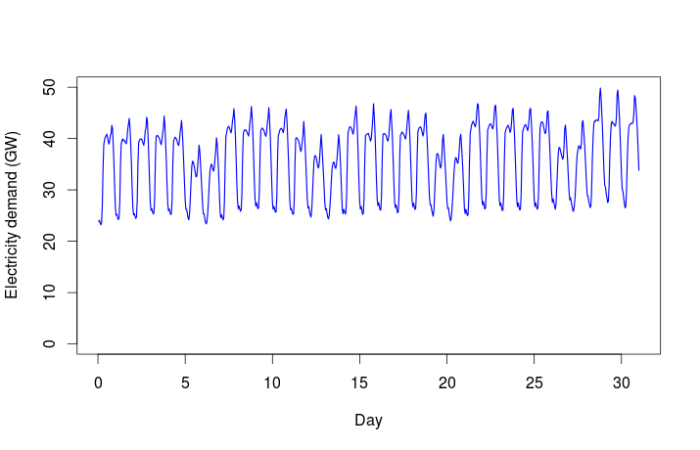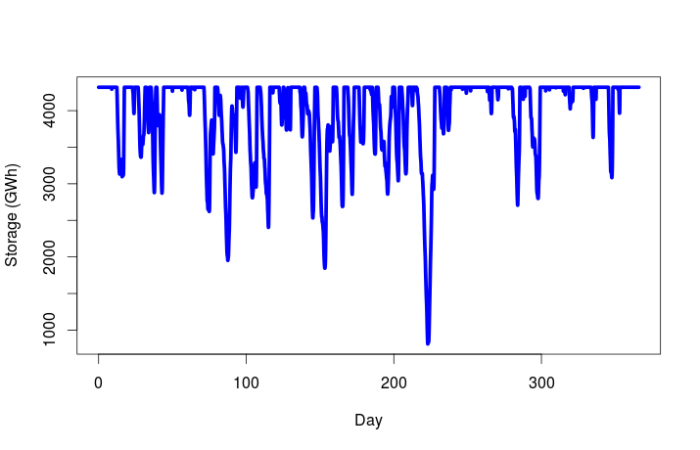For some reason the most popular blog post I have written is one that looked at the number of wind turbines it would take to power the UK. There is clearly a market for this kind of thing, and based on my google referrals there is an audience for a post on whether the UK could get 100% of its electricity from wind farms. So, here goes.
If the UK was not full of NIMBYs or if wind power had a much higher power density, then plastering the UK with enough wind turbines to provide the equivalent of 100% of UK electricity or energy demands might be doable. It probably isn’t. But here, I will just assume that we can stick wind turbines wherever we want.
Instead I’ll consider a rather obvious problem: the wind does not always blow, and whether this means 100% wind power is impossible. Of course some people imagine that if it’s not windy in one place, it will be windy some place else. Well, the data indicates that such talking points need to be reconsidered.
You can see this simply be picking a random month of output from UK wind farms. For example December 2011:
So, if we want 100% wind we will need to find a way of storing it, but can we find enough. David MacKay has convincingly argued that with existing technologies there is not enough storage available. Things may change, so for our purposes I will start of by assuming that we have access to one rather large battery that is capable of storing and outputting a day’s worth of UK peak electricity demand, i.e. 60 GW. So, we have 1440 GWh of storage. I will also assume very generously that this battery is 100% efficient. So, 1 GWh of excess wind farm output can be stored and then fed to the grid later with no losses.
Here is my simple electricity grid: the only source of power is wind farms and batteries. If wind farm output is greater than electricity demand then it is stored in the battery. Of course once the battery has 1440 GWh of juice stored, it will take no more. And the second wind power output goes below electricity demand and the battery goes flat you get a blackout.
How would this work? I’ve used historic data from October 2012 to see how many days we could go without the battery going flat.
There was roughly 5 GW of wind farm capacity visible to the grid in October 2012. UK average annual electricity demand is 40 GW. So, again I’ll be generous and have a total of 250 GW of wind farms on the grid. And we can use the output of the 5 GW of wind farms in October 2012 to see what the output of 250 GW would look like. Their total output should be almost double total electricity demand. Our wind farm output in October will then look like this:
In contrast electricity demand in October 2012 looked like this:
Given that demand never goes much below 25 GW, it appears that things might get rather dicey around the 9th of October. And this is exactly what happens: our battery runs flat in the middle of October the 9th. Here is what happens to the amount of energy stored in the battery throughout October:
So, 1 day of storage and a vast excess of wind power is not enough to get us to 100% wind. What if we were able to store 2 days of peak electricity demand? This looks a bit better. It can get us through the final three months of 2012 without our battery running flat:
What about the entire year? Unfortunately things come undone sometime towards the end of summer:
2 days of storage did not work. How about 3? Well, this manages to give us a system that will work all year long:
So, 100% wind powered electricity is possible in the UK. But we got there by building wind farms that produce two times more electricity than is consumed within the UK. We also need the ability to store three days of peak electricity demand. And that 100% efficiency assumption for storage is not going to reflect reality.
None of these things have any chances of happening. On the storage side we actually need the ability to store more electricity than probably exists on the entire planet currently. The technology breakthroughs will need to be profound. And the idea that we can cover the required amount of land in turbines is fanciful at best. Remember these simple statistics: the UK consumes on average 1.2 watts per square metre of land. Wind farms can provide us with 2.5 watts per square metre, maybe significantly less. For whatever reason the British like to use the area of Wales as a unit, “a region of rainforest the size of Wales is lost every year.†Well, 100% wind energy will require something like six Wales’ worth of land to be plastered by wind turbines. These land considerations should make what I have written above seem rather academic.
So, our original question: Can the UK get 100% of its electricity from wind power? Well, there only seems to be one answer, and that is no.
Authored by:
Robert Wilson
Robert Wilson is a PhD Student in Mathematical Ecology at the University of Strathclyde.
His secondary interests are in energy and sustainability, and blogs on these issues at Carbon Counter.







No comments:
Post a Comment